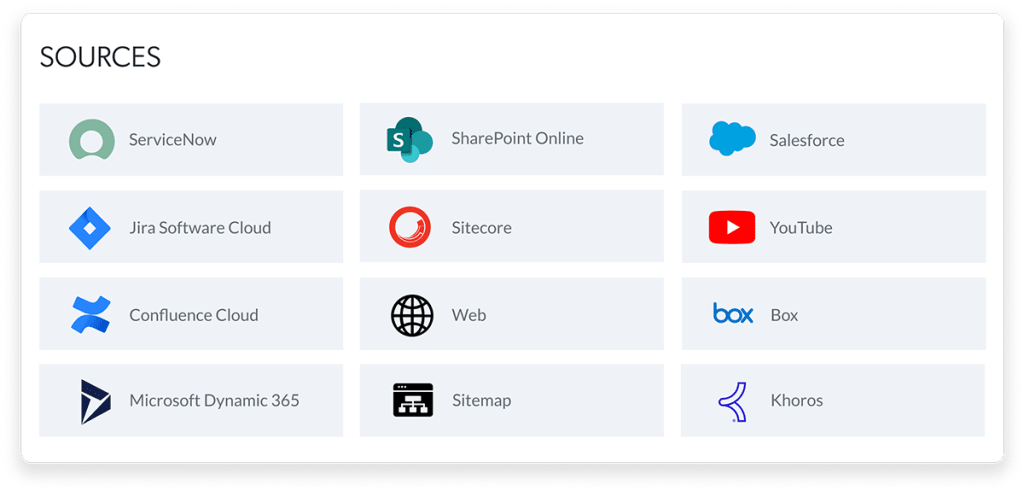If agentic AI is today’s headline act, data is the power working quietly behind the scenes. Enterprises are increasingly realizing that clean, connected, contextual data is what fuels meaningful AI outcomes.
At Coveo, we’ve seen a renewed focus on structured data, and for good reason. But that renewed focus shouldn’t come at the expense of unstructured or semi-structured content — because it’s the combination of all three that holds the key to unlocking true relevance.
The problem? Most organizations are still struggling to unify access to their data landscape (and, no, we don’t mean migration). And without that, even the smartest AI can’t live up to its potential.
Structured Data Is Having a Moment — And Agentic AI Is Why
Structured data has re-entered the spotlight — not coincidentally, but in response to the rise of agentic AI systems that demand precise, contextual data inputs to act effectively. Agentic systems, those capable of performing tasks, taking actions, or making decisions, depend on a deep understanding of the data environments they operate in.

And the market seems to agree. Just look at Salesforce’s recent acquisition of Informatica, or Snowflake buying Crunchy Data — moves that point to a growing recognition that structured data infrastructure is critical for powering intelligent, automated workflows.
Structured data is one way to quickly scale AI initiatives — when those initiatives are part of a specific ecosystem like Salesforce, ServiceNow, or others, anyway. The difficult part is that enterprises are so rarely built off of just one platform to house all data.
Structured Data in 2025
When most people hear “structured data,” they picture neat tables in relational databases — sales reports, ERP records, or CRM entries. But in 2025, that definition has expanded.
Structured data now encompasses:
- Semi-structured sources like Salesforce or ServiceNow, where text content is paired with rich metadata.
- User signals like roles, departments, locations, or past behaviors that guide relevance and personalization.
- Catalog-like content such as product data, employee directories, or case records — each treated as an entity with identifiable attributes.
While the definition of structured data has certainly widened, actually accessing and operationalizing that data remains a significant challenge. In fact, according to IDC, organizations estimate they are only using about 32% of their available data effectively.
Disconnected systems, siloed repositories, and inconsistent formats continue to stand in the way of true AI-readiness. According to MuleSoft’s 2023 Connectivity Benchmark Report, the average enterprise uses over 1,000 different applications — yet only 29% of them are integrated.
Where Coveo Stands: Bridging the Structured and the Unstructured
At Coveo, we’ve spent years tackling one of the toughest challenges in AI — unstructured data. The documents, web pages, conversations, and content that lack consistent format or structure, but are rich in context and meaning.
That’s where we shine. But we also make structured metadata highly actionable. Our architecture is designed to bridge structured platforms and unstructured content sources, allowing organizations to harness both types of data for better search, better personalization, and better automation.

Here are a few ways we do that:
- Service Cloud Insight Panel: Structured case fields shape which knowledge articles are suggested.
- User profiles: Used to personalize search query results and drive more meaningful recommendations.
- Commerce catalogs: Power the filtering and merchandising tools merchandisers depend on.
- Lightweight database connectors: Index structured systems like employee directories to make them searchable and usable across platforms.
In fact, all Coveo connectors index both unstructured data and structured metadata from every entity, delivering rich, high-quality search experiences.
Relevant reading: Learn more about our connector library
Why We Still Believe in a Hybrid Future
Lately, some vendors have started promoting a “semantic everything” approach. The idea is that if your search is good enough at understanding natural language, you don’t need structured data anymore.
We don’t buy that.
Semantic search provides critical context for understanding the intent behind a query and retrieving a broad range of relevant results — especially when users don’t use exact keywords. But for maximum precision, semantic search works best when paired with keyword or lexical search. Together, they enable both flexibility and targeted accuracy. Ultimately, search still relies on the classic metrics of recall and precision; both are essential, and striking the right balance between them for each query remains one of search’s greatest challenges.
You lose control when you go vector-only. Without structured fields, you can’t apply filters or boosts. You can’t guide results toward business goals. You can’t personalize at scale. And you may not be able to power your workflows effectively.
That’s why we’ve always believed — and continue to believe — that the future is hybrid. And we’ve built Coveo to reflect that.
Relevant reading: Why Search Engines Outperform Vector Databases for RAG
Why It Matters Now
In a market where lines are blurring — Salesforce acquiring Informatica, Snowflake acquiring Crunchy Data, and other examples of data and search converging — Coveo stands out by staying focused on what matters most: relevance.
Here’s how we do that:
- Singular, unified index: No need to replatform or migrate data.
- Continuously Learning ML Paired With Control: Out-of-the-box machine learning models immediately begin creating relevant experiences for audiences. And in addition to this, business users can tune results based on structured fields.
- AI-search at every point of experience: Structured and unstructured content are retrieved and surfaced to support complex use cases throughout the digital journey.
It comes back to the use case. And we support a wide range of them by focusing on what really matters — making sure the right content shows up at the right time, no matter where it lives.
Relevant reading: Discover more about the Coveo AI-Relevance™ Platform
Search Relevance Comes from the Fusion of Data Types
Structured data isn’t a feature — it’s foundational. And unstructured content isn’t going away; it’s only growing. Enterprises today need to unify these two types of data not just for technical integration, but to create meaning and relevance across every AI-powered experience.
With its hybrid architecture, Coveo enables this fusion — bridging structured data from systems like CRMs and ERPs with unstructured content from knowledge bases, websites, and collaboration platforms. This combined approach allows organizations to orchestrate AI across systems, deliver personalization at scale, and ground intelligent experiences in both context and truth.
Ultimate Relevance = Structured + Unstructured. That’s the future we’re building for.











